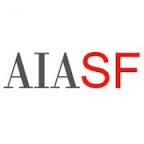A round robin interview with hackers from Team "My Block" including Kitty Myers, Julie Lam, Michael Ford, Corrie Messinger, Maraya Morgan and Jenn Hamrick
The Hackathon framework is modeled after the fast-paced methodology common within the most innovative tech companies in the Silicon Valley. Equity by Design's core team members augmented this framework with a Flipped Classroom packet to orient participants. In this blog, Team “My Block” debriefs on their experience - its initial formative steps, the process that creates a cadence for discovery, and their favorite take-aways.
Ice Breaker - The Egg Project
As a quick and effective way for individuals to know each other, each team was asked to find 3 or more things that ALL members had in common and write them inside a sketched "egg" and then identify 2 or 3 experiences or traits that were solely unique to an individual written outside the "egg". The exercise celebrates individuality while simultaneously building empathy with common ground.
What did you learn from your group in the course of doing this exercise?
Maraya -One thing that I learned was the acting of looking for commonalities will lead off into the territory of storytelling, which begets more storytelling, which begets more commonalities. At times it felt harder to find things unique to us, because it felt so good to find the things in each other to which we could all relate.
Jenn - Starting out the conference by being forced to rapidly share yourself was a brilliant way to get our heads in the game to be social for the duration of the event. I was happy to learn that everyone was really enthusiastic about what they are doing, and that gave me the confidence to be able to express myself among strangers/colleagues. It started out a bit slow as everyone tested the waters, but after a few minutes it was actually hard to get a word in because everyone was so excited to share their experiences and ideas.
Julie - The definitions of what is considered to be equity and diversity vary between cities, states, regions, and countries. Depending where we considered “home” really brings a different perspective to diversity issues. The biggest takeaway for me was that I would need to sit down with my peers at home to really determine what issues would be affecting Honolulu versus the rest of the nation. The issues brought up during my discussion with my team members at this Hackathon, can be the broad overall topics that I could start with and then fine tune from there.
Kitty - There were more unique characteristics than commonalities - we didn’t come up with 3 commonalities, just 2.
Julie - I learned from this ice breaker activity that everyone has different levels of intimacy and boundaries. Each person within our group chose to divulge different levels of personal info and hence allowed varying levels of intimacy to occur. However, at the end of the day, we learned quite a bit about everyone else within the group.
What was the most unexpected response to the what was Unique about each person? (Outside the Egg)
Maraya - Somewhere between unique and common - two teammates had lost children
Jenn - The strength of my teammates overcoming great losses was the most surprising thing to be brought up. I can’t even fathom how hard that was to discuss with the group, but I really want to thank them for their courage. It was really eye opening and reiterates how as architects we have to remember that we are designing for humanity and should do so with compassion and forethought.
Corrie - With the timing of this exercise following the initial panel presentations, there was more of a sense of openness than if this was a cold opener as soon as we gathered, which felt like it may have both framed the context of responses and also allowed the group to open up a bit more that early based on the frankness of the panelists.
Kitty - There is a HIP HOP Architect among us (Michael Ford).
Julie - For me, the most unexpected response was the one Mike provided - about losing a child. It really affected me on a very personal perspective.
What was the most unexpected response that was common to the group? (Inside the Egg)
Maraya - We all moved into architectural studies before college and all of us live in cities, four from Oakland, California!
Jenn - We all knew that we wanted to go into architecture before starting school, but many of us didn’t start out knowing that from a young age. I mostly hear about the people who always knew what they wanted to be when they grew up, and I have always been in awe of them. Learning how everyone came to find their own calling was inspiring, and made me realize that my path hasn’t really been that different from everyone else's. I was really surprised to find out how many of my group were from the Bay Area!
Corrie - Regional non-diversity.
Julie - Many of them came from the Bay Area or SF. How did that happen??
Kitty - All of us decided on architecture as a career in our early teens or earlier.
Defining the Problem
What did you think of the ideation process for defining the problem?
Maraya -The process was good, particularly in its time limitations. We were full of ideas, and to be cut off and immediately vote on our favorites was clarifying.
Jenn - I thought that the deadlines and voting process were effective to help us funnel all of our ideas into a cohesive plan. I was actually surprised to see that it worked out as efficiently as it did, maybe we need more of this?
Corrie - It scaled well to continually frame the problem & final presentation.
Julie - This process was both educating and a very useful reference for myself. It provided me with a framework for a similar event I will be hosting on June 22nd in AIA Honolulu. The way this Hackathon was formulated with first defining the problem was a simple and clear method by which we could start with. This system worked so well for myself that I will be emulating it during my event.
Kitty - All of us have a passion for bringing our work into the community, to solicit their ideas before finalizing the design. This process helps us clarify the purpose of our projects ( new structure/renovation/TI).
What was the problem that your group agree to solve?
Julie - Our team really spent quite a bit of time defining various problems. When we finally decided, we agreed upon "Accountability of Architects to the Community". I think the one thing that I would modify for this portion of the Hackathon, is the ability to reassess and reshuffle the groups during this point. I spoke to some of the attendees afterwards and they noted that some of the problems that were agreed upon is not what they were passionate about but rather something that the majority felt strongly about. With that said, I am suggesting that each group comes up with a problem but at this point of the event, allow individuals to reassess and, if desired, change groups to better meet their personal passions.
Crafting the Solution
What did you think of the ideation process for crafting the solution? Was it difficult to come up with ideas? Was it difficult to narrow down to the final solution?
Jenn - The solutions just seemed to flow naturally. All of us coming from a wide range of backgrounds and experiences helped us to see the problem from all angles.
Corrie - The ideas flowed well even though the problem request was a broad topic.
Julie - We had the opposite problem, we had so many solutions and so many ideas that we felt we had to really narrow down our ideas to really provide for the best solution possible for our selected problem.
Kitty - The process was simple for us. Our solution was based on many individual experiences and the permitting process. We each contributed ideas and parts of the solution. Architects are well trained at solving problems, so brainstorming our ideas was natural and fast-paced.
What was the problem that your group agree to solve?
Maraya - The challenge to community equity that we approached is that “architects and owners are designing non-livable, non-performing buildings w/o accountability to the community or users.” We see this as a result of a flawed communication paradigm (community reviews that happen infrequently and inconveniently) as well as a lack of an incentive on the part of the owner, who is serving their own interests or their investors’ interests first (or only). Our solution to this problem was to create an App that would allow people living in a neighborhood to quickly find out the stats on a planned building project in their neighborhood and give it a review, yelp style. They could also use this app to make suggestions on what they believe the neighborhood needs. On the output side of the app, the city (or other permitting body) would receive all the feedback directly from the people in easy understand statistics. The information and suggestions from the app could be used by the city to incentivize the owner and architect team to take suggestions from the community in exchange for a fast-tracking permitting process.
How did you decided to present your elevator pitch?
Maraya - We presented our App as a sketch demonstrating how people in the community would use MyBlock to influence the owner and the architect in a way that would be beneficial for everyone involved: example given- rather than having some redundant commercial tenant on the ground floor of a mixed use, a suggestion for a grocery was given by residents and acted upon by the O/A team after a talk with the permitting official.
Kitty - Our presentation was based on individual talents, group discussion, and available resources.
What was the biggest take-away from EQxDHack17?
Maraya - What can feel like chaos and a whimsy storm of ideas can in fact yield many brilliant ideas quickly, given a pre-agreed structure. Amazingly, I think the fact that we all generally had an idea of the time, but didn't concretely understand the limits of it allowed us to be freer and more frantically energetic at the same time.
Corrie - While equity can be a very wide-ranging topic, the context of the panelists and the themes of technology seemed to quickly work into the tactics of the presentations and may have led to the many ‘app-based’ solutions.
Julie - The Hackathon is a great methodology by which to brainstorm and come up with tangible solutions for identifiable problems. It provides a system by which we can channel our energy into creating solutions for equity problems that plague our field. It also provided a time constraint which created an immediacy and urgency towards finding solutions for problems that we normally would not have encountered.
Kitty - Architects, young and old have similar passions about design, value to the community, and accountability.
What was the most stimulating aspect of the workshop?
Maraya - The most stimulating aspect was to see the other groups presentations. During the process, I would overhear bits here and there of what the others were doing, and in the end products were unexpected and rich. I want them all to succeed so that I can have them/use them!
Corrie - The dialogue within the team was terrific, and even with the current backgrounds of the individuals (SF, Hawaii, Detroit), the themes and issues of community engagement seemed to be a solid and unexpected bond.
Julie - I enjoyed the various group presentations and speaking to each of the groups afterwards at Happy Hour. It was very enlightening to see the presentations and then have various members’ perspective of their interpretation of the presentations. Even amongst each group there were differing interpretations. Very interesting.
Kitty - The defining the problem exercise was fast-paced and lots of ideas.
What was the most challenging aspect of the workshop?
Maraya - The most challenging part was to focus on a single solution to a complex issue. There are so many good and actionable ideas that it can be hard to remember that the other solutions can always be investigated and acted upon later, but for now, the clarity of one idea is what’s needed.
Corrie - Time for development...while it was a quick hit, the 2-3 hours flew by.
Julie - Time constraints. More challenging is the execution of the winning solution. I really think it would be amazing to see the winning solution become reality in some way or form. But I understand the restraints of sponsorship and time. Still would be amazing to see it come to life.
Kitty - Initially crafting the solution. This came along easier after we looked at our members’ talents and incorporated them into different roles.
What would you suggest for people curious about attending a future EQxDHack?
Maraya - Don’t be nervous, it’s so much more natural than you’d ever expect! In the weeks beforehand, read about things that get you excited, and let those sit in the back of your mind.
Julie - Please please please consider signing up for it. Even if you are not passionate about the topic. The method itself is such a worthwhile experience. Through this experience I have formed relationships with two or more of the colleagues I have met within my group. It is through connections with other passionate leaders that I hope to achieve future equity goals.
Kitty - The process can be compared to an organized and purpose-driven brainstorming event.
EQxDHackathon Blog Series
Access the entire experience of the Equity by Design Hackathon here:
- #EQxDHack17 Recap and Blog Series
- Team S.P.A.R.C. - Swipe Right on Your Career (#EQxDHack17 Winners)
- Team "My Block" Explores Architects' Accountability to our Communities
- Team "Equator" - Toolkit for Assessing and Improving Equitable Practice
- Team "Our Town" - How do we increase public access to Architecture?










